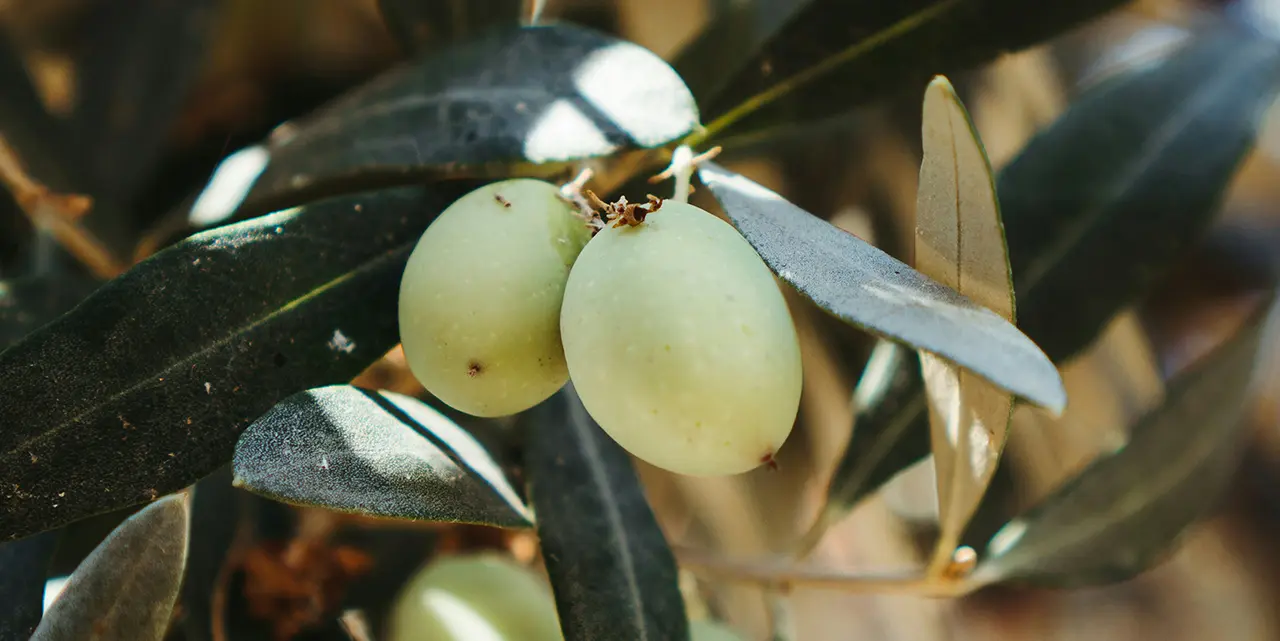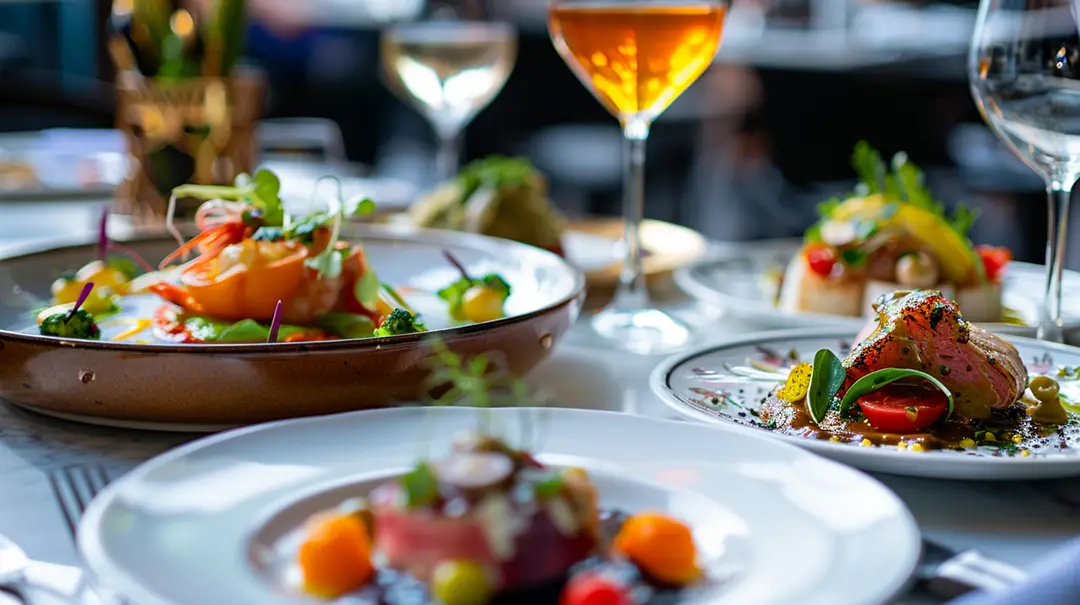

The Mediterranean coastline is renowned for its idyllic nature, breathtaking panoramas, and rich tapestry of history and culture. From the shores of Spain to the islands of Greece, each region is steeped in myth and folklore, offering a unique blend of historical influences. Med.kitchen celebrates this diverse culinary heritage, showcasing the vibrant and varied cuisines that have evolved over centuries.
Historically, the Mediterranean has been a crossroads for many cultures, each leaving its indelible mark on the local cuisine. Med.kitchen delves into this rich tapestry, exploring how past and present influences shape the region's culinary traditions. From the bustling markets of Italy to the aromatic kitchens of Morocco, we highlight the diverse culinary contributions from across the Mediterranean.
Embracing the philosophy of 'Looking back in order to move forward', we draw inspiration from the wisdom of Massimo Bottura, who aptly said, "Cookery is a tradition in evolution".
At Med.kitchen, we are truly blessed to be part of this culinary journey, celebrating the ever-evolving tradition of Mediterranean cuisine.
Read more about our purpose here

Explore the authentic Mediterranean diet, a culinary tradition celebrated for its health benefits and cultural richness. This article delves into the diet's ancient roots, core components, and regional variations. It contrasts the popularised, modern version with traditional practices, highlighting the importance of local ingredients and cultural heritage. Discover how this diet supports heart health, weight management, and longevity, and learn why it extends beyond food to encompass a holistic lifestyle. Perfect for anyone interested in the true essence of Mediterranean cuisine and its benefits.
Although a traditional pork pie is a British classic, and it’s often associated with picnics and festive occasions, it is something we enjoy making in our kitchen. This pie is crafted using hot water crust pastry, which gives it a firm yet crisp shell, perfect for holding the juicy pork filling. Hot water pastry, originally developed for its robust structure, is ideal for forming the pie’s characteristic shape. The pork is seasoned simply, often with sage or thyme, and the addition of a savoury jelly adds to its indulgent texture, making it a beloved staple of traditional British cuisine.
Difficulty: Moderate
Serves: 8
Course Type: Main
Allergen information: Gluten, Pork
Intolerances: Gluten
Ingredients:
Method: Begin by preheating the oven to 180℃ (350℉ or gas mark 4). In a large mixing bowl, combine the pork shoulder, bacon, salt, pepper, nutmeg, mace, and parsley if using. Mix thoroughly until the filling is well combined. For the pastry, sift the flour into a bowl and stir in the salt. Heat the water and lard in a saucepan until fully melted and then bring to a boil. Pour the hot lard mixture over the flour, stirring quickly to form a dough. Once cool enough to handle, knead the dough lightly until smooth.
Roll out two-thirds of the dough on a lightly floured surface and use it to line a greased 20cm loose-bottomed pie tin. Add the filling, packing it down tightly. Roll out the remaining dough to form a lid, crimp the edges to seal, and cut a small hole in the center. Brush the top with beaten egg for glazing. Bake for about 90 minutes or until the pastry is golden and the meat is cooked through. Allow the pie to cool slightly before removing from the tin. Serve warm or cold, as desired.
Tips: For a crisper pastry, allow the dough to rest in the fridge for 30 minutes before rolling it out. You can also add a jelly made from gelatin and pork stock after baking, pouring it through the hole in the lid, then let it set in the fridge overnight.
Traditional Maltese sausages are a beloved element of Maltese cuisine, representing the heart of Mediterranean home cooking. Made with pork, garlic, and a blend of aromatic spices, these sausages are often enjoyed grilled or fried, served with crusty bread or mixed into stews. The distinct flavour comes from a combination of fresh herbs and optional spicy undertones, making it a versatile and hearty dish. The traditional recipe reflects the island’s history, where local produce and straightforward preparation have been the foundation of Maltese culinary culture.
Maltese Sausages
Difficulty: Intermediate
Serves: 4
Course Type: Main
Allergen information: Gluten, Sulphites
Intolerances: Gluten, High FODMAP
Ingredients:
• 700 grams (1.54 lb or 3 cups) pork shoulder, minced
• 300 grams (0.66 lb or 1.3 cups) pork fat, minced
• 60 g sea salt
• 30 g crushed black peppercorns
• 30 g crushed coriander seeds
• 5 cloves of garlic, finely chopped
• 5 tablespoons chopped parsley
• Natural sausage casings
Method:
Ensure the pork is minced with a good amount of fat to keep the sausages juicy.
If using pork intestines, wash them thoroughly in several changes of cold salted water.
Mixing:
In a large bowl, mix the minced pork with the sea salt until well combined.
Add the crushed black peppercorns, crushed coriander seeds, finely chopped garlic, and chopped parsley.
Mix thoroughly to ensure even distribution of the spices and herbs.
Stuffing:
If you have a sausage stuffer, use it to fill the pork intestines with the mixture. Leave about two inches of casing on either side, cut, and tie a knot at both ends. Twist in the middle to form individual sausages.
If you don’t have a sausage stuffer, you can use a funnel to fill the casings manually. Alternatively, you can form sausage shapes using cling film as described in some recipes.
Pricking:
Prick the sausages all over with a fine pin or toothpick to prevent them from bursting during cooking.
Drying (optional):
Hang the sausages in a cool, dry place for 2-4 days to dry. This step is optional but helps to develop the flavours further.
To cook, fry in a pan over medium heat, grill, or bake until thoroughly cooked, ensuring the internal temperature reaches 75°C (167°F).
Tips:
• This recipe combines traditional ingredients and methods to create authentic Maltese sausages, known for their distinctive flavor profile dominated by coriander and garlic
• Ensure the casings are not overfilled to prevent bursting during cooking.
While milk kefir grains and water kefir grains share a common purpose in fermenting beverages, they differ significantly in composition and use. Milk kefir grains are used for fermenting dairy milk and are a complex mixture of bacteria and yeast embedded in a matrix of proteins, lipids, and polysaccharides. This combination ferments the lactose in milk to produce a tangy, thick, and nutritious drink packed with probiotics.
On the other hand, water kefir grains are used for fermenting sugar water, juice, or coconut water. These grains are also symbiotic cultures of bacteria and yeast, but they differ in the specific species and the matrix material, which is generally a polysaccharide dextran. Water kefir is a lighter, often carbonated beverage with a wide variety of beneficial bacteria and yeasts.
The key difference lies in their substrates and the end products they produce; milk kefir grains are for dairy fermentations, resulting in a creamy, yogurt-like drink, while water kefir grains ferment sugar solutions, creating a light, carbonated beverage. Neither can effectively ferment the other’s preferred medium without losing vitality or altering the expected probiotic benefits.
Creating botanical gin from vodka is a straightforward process involving infusing vodka with juniper berries, coriander seeds, cardamom, citrus zest, and optional botanicals like lavender or rose petals. You mix the ingredients, let them infuse in a jar for one to two weeks, tasting regularly to achieve the desired flavour. This method effectively transforms plain vodka into a gin-like spirit, ideal for gin enthusiasts to enjoy custom botanical blends.
Botanical-Infused Vodka Recipe, Difficulty: Easy, Serves: Varies, Course Type: Beverage, Allergen information: None, Intolerances: None
Ingredients:
– 750ml (25.4 fl oz or 3.17 cups) Vodka
– 2 tablespoons (30ml or 1 fl oz) Juniper berries
– 1 teaspoon (5ml or 0.17 fl oz) Coriander seeds
– 4 Cardamom pods
– 1 Cinnamon stick
– 2 strips of Lemon zest, avoiding the white pith
– 1 strip of Orange zest, avoiding the white pith
– 1 teaspoon (5ml or 0.17 fl oz) Dried rose petals (optional)
– 1 teaspoon (5ml or 0.17 fl oz) Dried lavender flowers (optional)
Method: Begin by sterilising a large glass jar. Mix all your botanicals together and add them to the jar. Pour in the vodka, ensuring the botanicals are fully submerged. Seal the jar and store it in a cool, dark place. Shake the jar once daily for the first week. Taste the infusion after one week; if the desired flavour strength is reached, strain the vodka through a fine mesh strainer or cheesecloth to remove all botanicals. If a stronger flavour is desired, allow it to infuse for up to one more week, tasting daily. Once satisfied, transfer your botanical-infused vodka into a clean bottle.
Tip: The key to a successful infusion is tasting as you go, since the intensity of flavour can vary based on the freshness and specific quantity of your botanicals.
Cooking clams offers a delightful culinary experience, especially when using fresh, local species from the Mediterranean. The region’s clams, like the Venus species, are renowned for their sweet flavour and tender texture, making them ideal for simple yet flavourful dishes. This recipe for Mediterranean Garlic Clams showcases how to cook them to perfection, creating a dish that’s both easy to prepare and bursting with authentic Mediterranean taste.
Selecting the Best Clams
Choosing the best clams is essential for a delicious and safe seafood dish. When at the market, start by inspecting the shells. Fresh clams should have tightly closed shells, a sign that they are alive and well. If you notice any slightly open shells, give them a gentle tap. They should close quickly, indicating freshness.
The smell is another key indicator. Fresh clams should exude a clean, briny aroma reminiscent of the sea. Avoid any that have a fishy or unpleasant smell, as this suggests they are past their prime.
When examining the clams, ensure their shells are clean and free from cracks. A clam with a broken shell is likely dead and should be discarded. Fresh clams should also feel heavy for their size, a good sign that they are full of water and alive.
Always where possible choose local species such as Venus clams or Razor clams. These varieties are prized for their sweet flavour and tender texture, making them ideal for recipes like Mediterranean Garlic Clams.
Proper storage is crucial once you have selected your clams. Keep them cool and moist in a breathable bag or container, covering them with a damp cloth in the refrigerator. This helps maintain their freshness until you’re ready to cook.
Mediterranean Garlic Clams
Difficulty: Easy
Serves: 4
Course Type: Main
Allergen information: Shellfish
Intolerances: Gluten (if using bread as a side)
Ingredients:
– 1 kg (2.2 lbs or about 4 cups) clams, preferably the Venus species for authentic Mediterranean flavor
– 3 tablespoons (45 ml or 3 tablespoons) olive oil
– 4 garlic cloves, minced (about 16 grams or 4 teaspoons minced)
– 1 small chili pepper, finely chopped (optional for heat)
– 100 ml (3.4 oz or about ⅓ cup) dry white wine
– A handful of fresh parsley, roughly chopped (about 15 grams or 1 tablespoon chopped)
– Salt and pepper, to taste
Method: Begin by thoroughly washing the clams under cold water to remove any sand. Heat the olive recalled in a large pan over medium heat until hot but not smoking. Add the minced garlic and chili pepper if using, sautéing until fragrant—about 1 minute. Pour in the white wine and bring to a simmer, allowing the alcohol to evaporate. Add the clams to the pan and cover, cooking for 5-7 minutes until the clams have opened. Discard any that remain closed. Sprinkle with fresh parsley and season with salt and pepper to taste. Serve immediately, preferably with crusty bread to soak up the delicious sauce.
Tips: When selecting clams in the Mediterranean region, the Venus species is highly recommended for its sweet flavor and tender texture. Ensure all clams are closed or close when tapped before cooking. This indicates they are alive and suitable for consumption.
Paratha flatbreads are a staple of South Asian cuisine, particularly in India, where they are often enjoyed as a breakfast or dinner item, either plain or stuffed. Though not originally Mediterranean, parathas share similarities with other types of flatbreads enjoyed in the region, like pita or lavash. This reflects the fluidity of culture and cuisine, as flatbreads are cherished across the Mediterranean for their versatility and the way they complement rich, spiced dishes, much like parathas do in their native culinary context.
Paratha Flatbreads
Difficulty: Medium
Serves: 4
Course Type: Bread
Allergen information: Gluten, Wheat
Intolerances: Gluten
Ingredients:
– 250 grams (8.8 oz or 2 cups) whole wheat flour, plus extra for dusting
– 150 ml (5 fl oz or ⅔ cup) water
– 1 teaspoon (5 ml or 1 teaspoon) salt
– 2 tablespoons (30 ml or 2 tablespoons) vegetable oil, plus extra for cooking
Method:
Begin by mixing the flour and salt in a large bowl. Gradually add the water, mixing continuously to form a soft dough. Knead the dough on a lightly floured surface for about 10 minutes until it’s smooth. Cover the dough with a damp cloth and let it rest for 30 minutes. After resting, divide the dough into eight equal portions, roll them into balls, and then flatten each ball into a disk. On a floured surface, roll each disk into a thin circle about 20 cm (8 inches) in diameter. Heat a tsp of oil in a pan over medium heat. Place a paratha in the pan, cook until its surface starts to bubble, then flip it and brush lightly with oil. Cook until both sides are golden and crispy. Repeat with the remaining dough. Serve hot.
Tips: For a flakier paratha, you can fold the rolled dough in layers before rolling it out into circles. Adding herbs or spices to the dough can also add more flavors to your parathas.

At Med.kitchen, our passion lies in crafting exceptional culinary experiences through our online platform. We specialise in sharing a wealth of knowledge via articles, recipes, courses, and online mentoring, aiming to inspire both novice and seasoned chefs alike. Our focus has shifted from private dining to being an online source of gastronomic inspiration, allowing you to explore and refine your culinary skills from the comfort of your home..